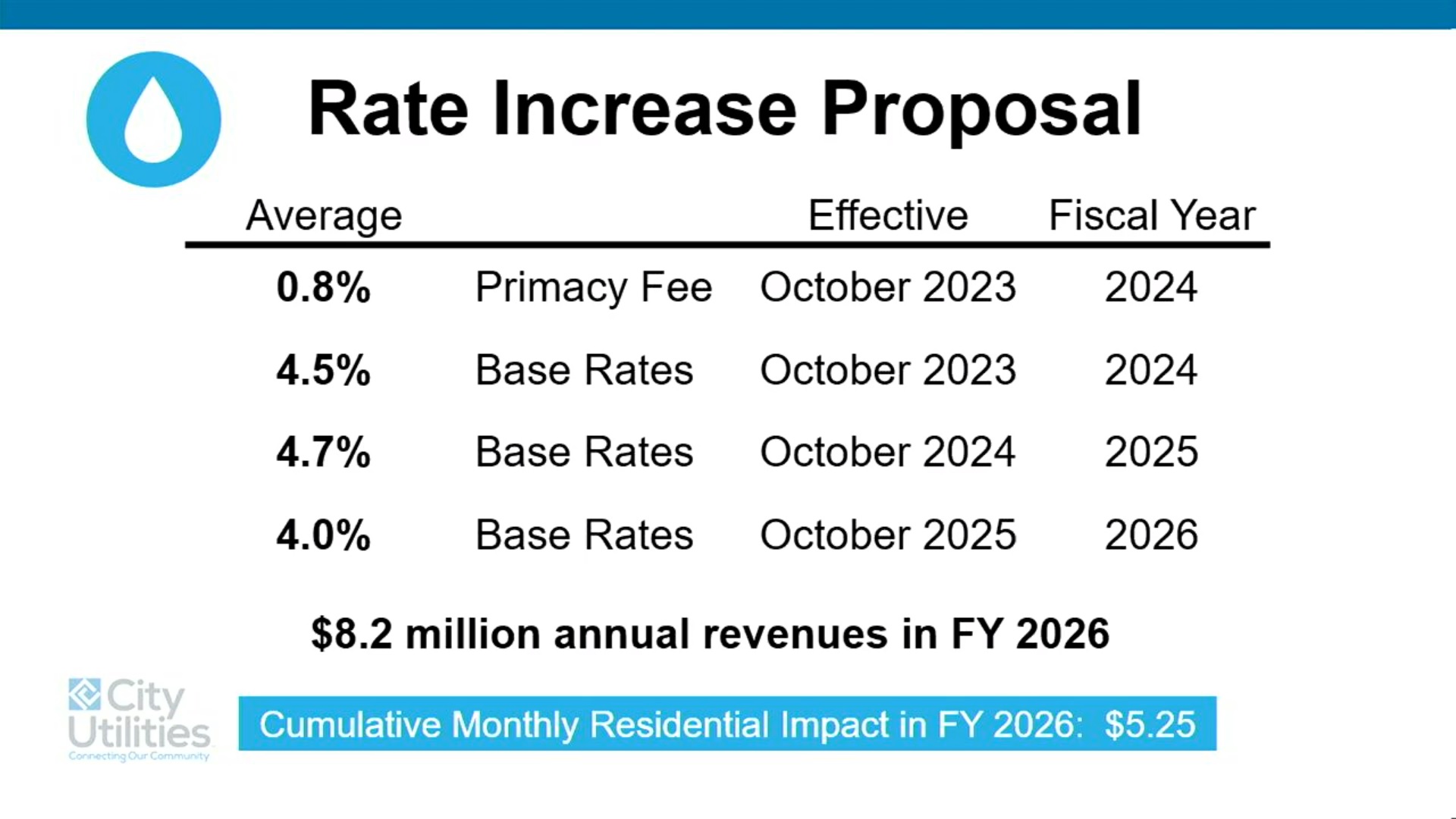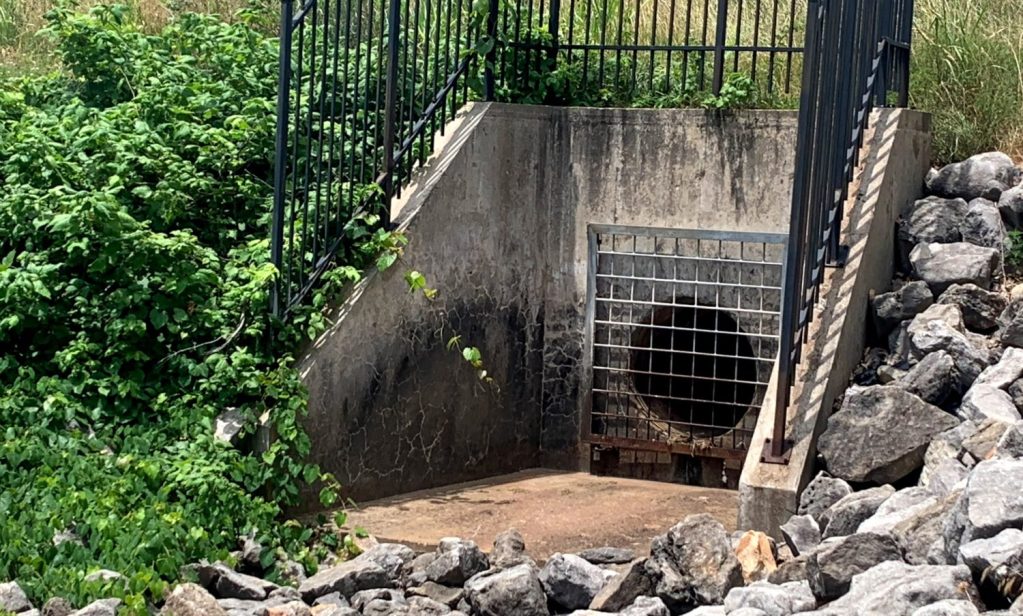Springfield residents and business owners are likely to pay more money each month for water service starting in 2023.
At an upcoming meeting, likely in September, the Springfield City Council will consider a recommendation from the Springfield Board of Public Utilities to increase water rates three times over three years. The Board of Public Utilities approved the fee recommendations with a unanimous vote at a meeting on Aug. 19.
The proposed schedule contains a series of three rate increases over three years that begin in October 2023, with additional rate increases in October 2024 and October 2025. The October 2023 increase would drive up rates $1.94 per month for the average household water customer, then $1.78 per month in 2024, and then another $1.53 in 2025, bringing the total increase to $5.25 per month for the average residential water customer, or about $63 per year.
City Utilities President Gary Gibson said the fee schedule represents months of work to find the rates that match water main replacement needs with what is thought to be affordable for utility customers.
“As we look to match our main replacement program to a cycle that matches the expected life of the mains, we see increased costs not only in labor but materials to maintain what we’re doing and not get behind,” Gibson said.
3 water rate increases over 3 years

City Utilities Director of Rates and Fuels Krista Shurtz explained the fee increases occur in two places. One is with the base rate for services, which is currently $18.50 per month for residential customers plus $2.83 per hundred cubic feet (748 gallons) of water. The price per 100 cubic feet increases incrementally in May, June, July, August and September if a customer uses more than 500 and then more than 1,500 cubic feet of water in a month.
The second proposed change to the rate structure is to offset the Missouri Department of Natural Resources primacy fee. The word “primacy” means “the state of being first,” and in this case, means the Missouri Department of Natural Resources is the primary tester of public drinking water, holding a more important role than the U.S. Environmental Protection Agency. According to the Missouri DNR, Missouri is one of 49 states to use primacy fees to fund state government-run water testing programs.
“We do propose to take the primacy fee — which is a state-mandated fee that we pay presently on behalf of our customers — out of our base rates and include that as a passthrough fee to our customers,” Shurtz said.
Changing the primacy fee into a passthrough fee would cause about a 0.8 percent rate increase to Springfield water customers. Additionally, Springfield water customers would have base rate increases of 4.5 percent, 4.7 percent and 4.0 percent each year.
Springfield’s demand for water

Incremental increases should be easier for customers to take over time, Shurtz said.
“Customer impacts are at our center focus when we’re designing a rate increase and proposing to board and council for approval,” Shurtz said.
At the end of the increases in 2026, Springfield City Utilities would bring in an additional $8.2 million from what it currently makes to operate the water system and offset the Missouri DNR’s primacy fee increase that began in January 2022.
“The bulk of our water system cost to serve our customer is in the distribution system,” Shurtz said. “Nearly half of those costs are for our distribution system. About a quarter is for treatment — you know, we have two water treatment plants that treat our source water — and about a fifth is for the supply and pumping, so we pump the raw water to our treatment plants, from our treatment plants we pump it to our customers.”
Fellows Lake is Springfield’s primary source of drinking water, according to a source water protection plan filed with the Watershed Committee of the Ozarks. A pipeline from Stockton Lake can currently deliver 20 million gallons per day to Fellows Lake, McDaniel Lake and a pump station at Fellows Lake.
Once water from Stockton Lake reaches Fellows Lake, it can be pumped to the Blackman treatment plant using four pumps, each rated at 15 million gallons per day. Water may also follow the Little Sac River to McDaniel Lake, where it can be pumped to the Fulbright Treatment Plant just north of Springfield.
Springfield also gets some of its drinking water from groundwater, with wells at Fulbright and at a well off of South Kansas Avenue.
No feedback from the public
Springfield water customers have been paying the same rate for water since 2020.
“It’s been six years since we brought a rate increase to board and council,” Shurtz said. “The last rate increase that we brought was also a series of increases in 2018, ‘19 and ‘20.”
Mark Eck, the chairman of the City Utilities Citizens Advisory Council, said the group unanimously recommends the water rate increase series to the Springfield Board of Public Utilities.
“When the CU Advisory Council considers proposed rate and policy updates of any kind, we have the CU board guidelines on which to base our recommendation,” Eck said.
Citizens Advisory Council held a public hearing to see citizen comments on the proposed rate adjustments.
“There were no public comments received during the hearing,” Eck said.
Background on Missouri’s primacy fee
The Missouri General Assembly enacted a law in 1992 that established a primacy fee to fund laboratory services for state-run testing of drinking water systems, to make sure that drinking water is safe according to state and federal laws.
“The primacy fee is a user fee, paid by the customers of Missouri’s public water supply systems and set by state law,” Missouri DNR Division of Environmental Quality Director Kyra Moore wrote in a fact sheet on the primacy fee published Feb. 14, 2022. “Two percent of the primacy fee goes to the public water system to cover the costs of collecting the fee. The remainder is forwarded to the Missouri Department of Revenue for use by the Missouri Department of Natural Resources. The department uses the primacy fee to fund testing for drinking water contaminants, inspections, compliance activities, complaint investigations and technical assistance.”
The fee generates about $4.6 million per year for water testing for the state of Missouri.
The increased primacy fee was one factor in the rate increase, Shurtz said, but it wasn’t the sole factor.
“The primacy fee was one driver, but other, normal inflationary pressures are also a driver, material costs are a driver, increases in labor costs are also a driver,” Shurtz said. “All of the above are driving up costs.”

